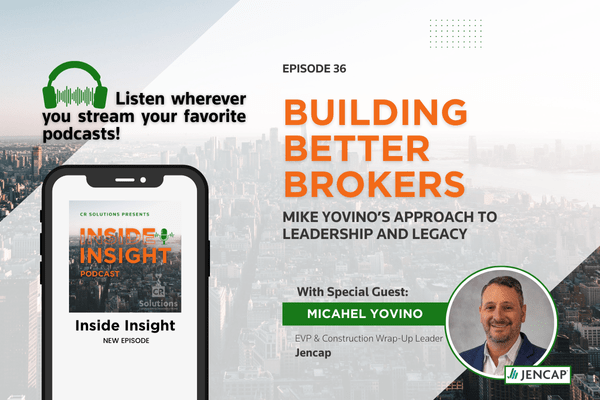Why we have 98 percent online user compliance, when others boast of 40-50 percent
A recent article posted on LinkedIn and resulting conversation got us thinking. The article boasted that software was streamlining management of Controlled Insurance Programs through the success of online contractor submissions. The company had a swagger in their step due to 45% of contractors complying with their online submissions requests. CR Solutions didn’t realize that we should be bragging; but apparently we should be. Our online payroll platform, launched in May of 2011, has 98% of contractors submitting electronic payroll reports via the portal.
Learn more about our proprietary wrap-up software here.
Why do you care?
The answer depends upon who you are. Yet, we find that there are reasons that can be appreciated by the sponsor, the broker, the carrier, and, of course, the contractor.
Immediately availability: Old school submissions sat on a fax machine, in an inbox or even in a mailbox until the data entry person had collected a nice little pile and would take the time to enter payroll. With online submissions, when the contractor hits submit, information regarding that payroll is available in reports instantly. There is no lag time, once the data is submitted the information is available, allowing for real-time viewing to sponsors, carrier brokers, or others with access to the on-line reports.
Accuracy: Fewer data entry points provide less opportunity for errors. Also, the system (as is covered more below) eliminates the opportunity for some typos and other manual errors to enter our database.
Personal hands-on attention: Now that we can spend less time shuffling paper, we have more time to dedicate to the people we work with. This can mean answering questions, providing information, or just helping make the overall process easier for participants. We are not developing technology to replace people; we are developing it to enhance our capabilities and, more importantly, to enhance the personal touch.
What is behind our success?
In short, we think it is a focus on the contractor/user. Making a system that works for them makes the system work for us. Here’s what it came down to:
No recollection necessary
Requests are sent via email when the payroll is due and include a customized link to the site. There is no need to remember the web address or even a username as clicking this link automatically populates the username.
Simple Passwords
Passwords are set by the user and easy to reset should they be forgotten.
Simple (and personalized) Forms
We’ve been doing this a long time – both communicating with the contractor to collect the info and manually entering it ourselves. We know where things get confusing, where errors can happen, and how to be efficient. So, we made the entry form very easy to use and understand. For instance, a project with only one Worker’s Compensation code can be as short as two entry fields for a month. Some contracts require a bit more information. Consequently, each form is individualized to the contract and includes instructions for more difficult calculations such as New York’s dreaded limited payroll.
Need extra help? Instructional videos and Knowledge Base show the contractor what they need to know
Our software is so intuitive often users will breeze through the system with no need for help. At teh same time – instructional videos and our Knowledge Base help the user use the system and calculate their payroll.
Unexpected things happen
We can’t anticipate everything that a contractor might need to tell us. That’s why we allow contractors to enter a note. If the contractor can’t convey what they want to tell us, they might just NOT SUBMIT ANYTHING. The thing about the old-school paper form is that it was flexible. At times this was frustrating, a contractor could just mark out the WC code that they originally submitted and write something new. It allowed them to put a note in the margins to say, “Hey we have a new WC code that we would like to submit”. A system that is too rigid and blocks such communications will deter use. So, while we definitely push to get the info we want, we allow the contractors to communicate their intent, thus adding additional flexibility to avoid a possibly frustrating situation for the contractor.
Personal contact
An email doesn’t have the same effect as hearing the voice of an actual person requesting that payroll be submitted. To make this easy on our team members, the system delivers the CRS team with the information they need to personally contact contractors that are not submitting their payroll. A system generated monthly email for the project to the internal account manager indicates which contractors need to contacted, provides their contact information, and indicates how many months are missing. Sometimes a chat with the account manager simply reveals that the contact has changed or our email was captured by a spam filter.
Listening to the Contractor
Even though the contractor isn’t paying us, we see them as one of our clients. Maybe we are selfish. We want to have a good day and that happens when we all get along. We interact with them daily and listen to their frustrations. When we launched the system to a test group of a couple of projects and our primary goal was to listen to the feedback that our contractors provided.
We listened, the software adapted
All of this is just a symptom of our greatest asset – a culture of good communication and a strong desire to be the best. The reason our online software works is because the people in the office had great ideas, they shared them, they talked about them, they tested them, then they improved them.
Let us show you how we can make your life easier with our software – click here to schedule a demo.
Interested in a proposal? Click here





